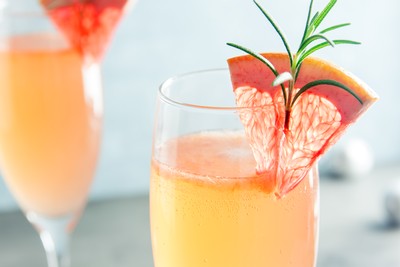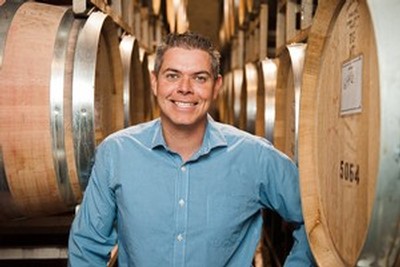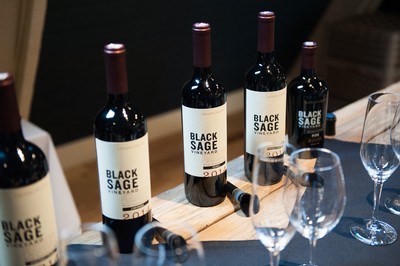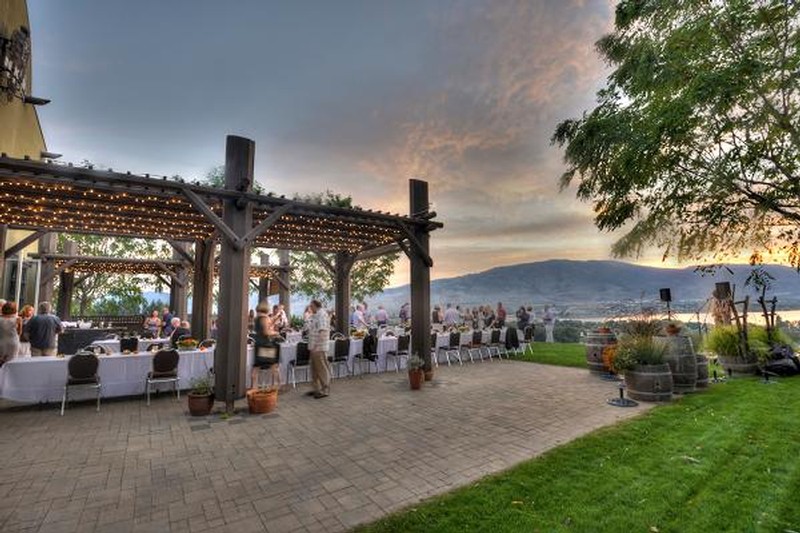Movement & Mimosas at Sumac Ridge
|
|
Venue: Sumac Ridge
Date: April 16 & 30, 2020
Time: 8:30 am - 10:00 am
Price: $25 per person
Wake up and start the day with us at Sumac Ridge! Our instructor will lead you through an amazing class for all fitness levels, followed by a light breakfast featuring delicious treats from Summerland’s own True Grain and Mimosas made with our Steller’s Jay Brut.
Mastering Meritage at Sumac Ridge
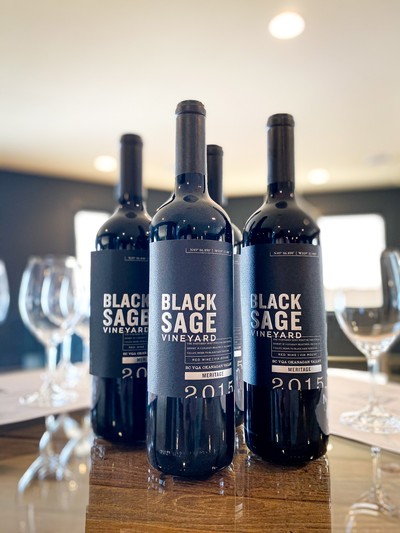 |
Venue: Sumac Ridge Estate Winery
Date: March 21, 2020
Time: 2:00 pm - 4:00 pm
Price: $35 per person
Learn the artistic craft that our winemaker has created with our Black Sage Vineyard Meritage. In this hands-on seminar you will play winemaker for an hour, exploring different blends with classic Bordeaux varietals produced from our Black Sage Vineyards.
Includes a charcuterie and a glass of our 2015 Black Sage Meritage.
In The Cellar Series: Library Wine Tastings with Justin Hall | Enthusiasts Favourites
|
|
ENTHUSIASTS FAVOURITES
Chardonnay & Pinot Noir
Date: March 13, 2020
Time: 2:00 pm
Price: $35 per person ($25 Member Price)
Venue: Nk'Mip Cellars
Explore the cellar of North America’s first Indigenous owned and operated winery with Winemaker and Osoyoos Indian Band member, Justin Hall.
The tasting session includes 8 samples of wine from mixed vintages ranging from 2002 to current vintage. The route to the Underground Cellar includes stairs, so comfortable footwear is recommended.
In The Cellar Series: Library Wine Tastings with Justin Hall | Big Bold Reds
|
|
BIG BOLD REDS
Merlot, Cabernet Sauvignon & Mer'r'iym
Venue: Nk'Mip Cellars
Date: February 14, 2020
Time: 2:00 pm
Price: $35 per person ($25 Member Price)
Explore the cellar of North America’s first Indigenous owned and operated winery with Winemaker and Osoyoos Indian Band member, Justin Hall.
The tasting session includes 8 samples of wine from mixed vintages ranging from 2002 to current vintage. The route to the Underground Cellar includes stairs, so comfortable footwear is recommended.
Bohemian Wreath Workshop at Sumac Ridge
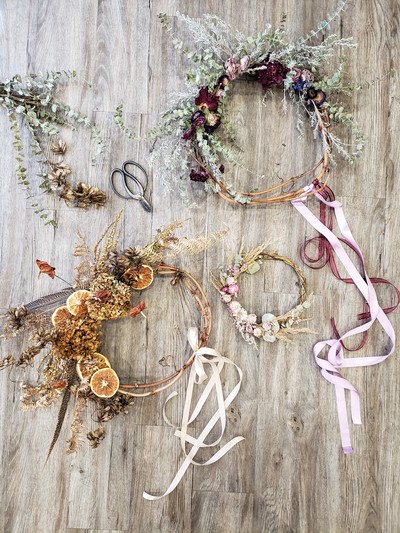 |
Date: Thursday, February 13, 2020
Time: 6:30 pm - 8:30 pm
Price: $65 per person
Venue: Sumac Ridge
Grab your friends and join us for 'Palentine's Day'!
In this workshop, lead by Bailley Rose of Gems and Stems - students will learn techniques to create and adorn their own wreath in a whimsical earthy design, perfect to add color and texture to your home.
Using traditional, natural materials, including dried fruit, blooms and fresh foliage, this is the time to get crafty and customize your own unique decor.
Workshop price includes a glass of wine and light charcuterie.
Valentines and Vintages - Vertical Tasting at Sumac Ridge
|
|
Date: Saturday, February 15, 2020
Time: 2:00 pm - 4:00 pm
Price: $30 per person
Venue: Sumac Ridge
Celebrate Valentine's Day by tasting your way through a 5 year vertical of our Black Sage Vineyard Cabernet Sauvignon. We'll be opening bottles from 2013 through 2017 - showcasing some of the best growing years the Okanagan Valley has experienced.
In The Cellar Series: Library Wine Tastings with Justin Hall | Nk'Mip Pillars
2:00 PM to 3:00 PM Fri, Jan 24, 2020
Venue: Nk'Mip Cellars
THE PILLARS
Pinot Blanc, Riesling & Syrah
Date: January 24, 2020
Time: 2:00 pm
Price: $35 per person ($25 Member Price)
Explore the cellar of North America’s first Indigenous owned and operated winery with Winemaker and Osoyoos Indian Band member, Justin Hall.
The tasting session includes 8 samples of wine from mixed vintages ranging from 2002 to current vintage. The route to the Underground Cellar includes stairs, so comfortable footwear is recommended.
Qwam Qwmt Gallery | Winter Wine & Cheese Pairing
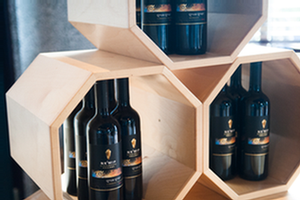 |
Date: Saturday & Sunday's in February
Time: 12:00 pm & 2:00 pm
Price: $15 per person
Venue: Nk'Mip Cellars
Experience the art of food and wine pairing in our semi-private Qwam Qwmt Gallery. Enjoy five of Nk’Mip Cellars award winning wines served in Riedel varietal specific glassware with specially selected cheese pairings.
Reservations Required
Summer Sippin' Wine Cocktail Recipes
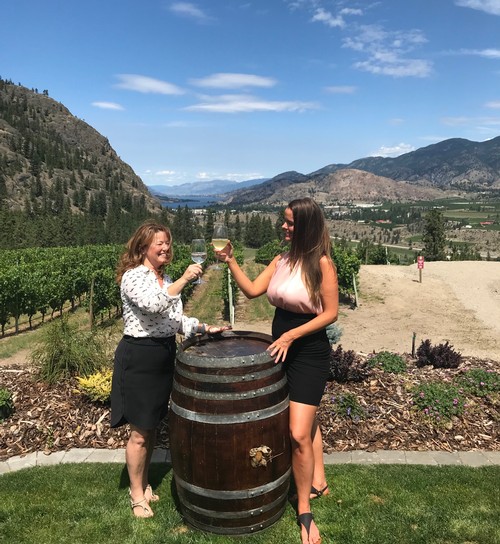
We shared a wine cocktail Virtual Tasting Room video on our social media recently and by popular demand, we are excited to share these wine cocktail recipes with you. These are perfect for sipping on your patio, with friends at a gathering, or next to the pool.
Summer Sipper
Ingredients
Ice
Twig of fresh lavender (sub with mint if lavender is not available)
1 ounce of elderflower syrup (available at IKEA)
Generous pour of Pinot Gris (or Sparkling Brut)
1/2 cup Perrier (or any other sparkling water)
Method
Add ice to your glass, then break up lavender into glass. Pour in elderflower syrup, Pinot Gris and then top with Perrier. Stir, sip, enjoy!
Ginger Ninja
Ingredients
Ice
Two tablespoons of peeled & roughly chopped fresh ginger
1-2 tablespoons agave syrup
1/2 cup Ginger ale (artisanal style soda preferred)
1-1/2 cups of Gewürztraminer
2-3 mint leaves
Method
Add ice to your glass. Place chopped ginger a fine sieve and place over a bowl (to gather pressed juices). Pour agave over ginger and press the ginger with a spoon to release the juices into the bowl. Discard ginger/sieve and add ginger ale into agave/ginger syrup in bowl to loosen up the syrup. Stir gently. Add ice to glass and pour agave syrup/ginger ale mix into glass. Top up with a generous amount of Gewürztraminer. Stir, sip, savour! Want an extra kick? Add a splash of tobassco sauce!
Peachy Keen
Ingredients
Ice
1 fresh, very ripe peach
1 cup Sparkling Brut
2-3 leaves Thai basil
Few drops of Basil infused oil
Method
Add ice to your glass. Cut peach in half and squeeze the juice into the glass, ensuring some of the flesh of the peach is crushed into the glass. Top up up Sparkling Brut. Drop in Thai basil leaves and the basil infused oil. Admire the beauty, sip, enjoy!
Nk'Mip Summer Patio Reception Benefiting REED
Join us for dinner and award winning wine as you enjoy the spectacular views of Osoyoos Lake and surrounding hills from the expansive Nk'Mip Cellars Patio.
Tap your toes to the musical stylings of Diane Ball. Bid on prized silent auction items. Learn about the significance of REED's work from survivor and 2019 REED award recipient, Trisha Baptie.
Tickets include a fry bread taco dinner and your first glass of award winning Nk'Mip wine.
Resist Exploitation, Embrace Dignity (REED) is a Vancouver-based nonprofit that stands with and for sexually exploited women and challenges the demand for access to their bodies. For more information please check out: http://embracedignity.org/

